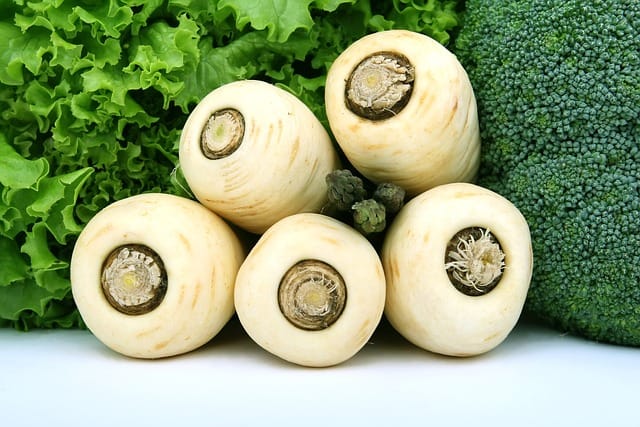How to grow Parsnips
Parsnips are a delicious root vegetable that is easy to grow in your home garden

In this article:
- Introduction
- Choosing the Right Variety
- Climate and Soil Requirements
- Sowing and Germination
- Transplanting or Direct Sowing
- Watering and Thinning
- Fertilization and Nutrient Requirements
- Weed Control
- Pest and Disease Management
- Harvesting
- Storing and Preservation
- Common Growing Problems and Solutions
- Tips for Successful Parsnip Cultivation
- Conclusion
Introduction
Parsnips are a delicious root vegetable that is easy to grow in your home garden. They are a member of the carrot family and have a sweet, earthy flavor. In this article, we will guide you through the process of growing parsnips from choosing the right variety to harvesting and storing.
Choosing the Right Variety
When selecting the variety of parsnips to grow, consider factors such as your climate, the size of the mature parsnips, and the time it takes to reach maturity. Some popular varieties include Hollow Crown, Gladiator, and Javelin.
Climate and Soil Requirements
Parsnips thrive in cool weather conditions and require a long growing season. They prefer well-drained, loamy soil that is rich in organic matter. The ideal soil pH for parsnips is between 6.0 and 7.0.
Sowing and Germination
Start by preparing the soil by removing any weeds and loosening it with a garden fork. Sow the parsnip seeds directly in the garden bed, placing them about half an inch deep and one inch apart. Water the soil thoroughly. Germination typically takes around two to three weeks.
Transplanting or Direct Sowing
Transplanting parsnips is not recommended, as they have long taproots that make them sensitive to transplant shock. It is best to sow the seeds directly in the garden bed where they will grow.
Watering and Thinning
Parsnips require consistent moisture to grow properly. Keep the soil evenly moist but not waterlogged. As the seedlings emerge, thin them to three to four inches apart to allow enough room for the roots to develop.
Fertilization and Nutrient Requirements
Before planting, incorporate organic matter, such as compost or aged manure, into the soil to provide essential nutrients. Avoid using excessive nitrogen fertilizer as it can cause the roots to fork or split.
Weed Control
Weeds can compete with parsnips for essential nutrients and moisture, so it is important to keep the garden bed weed-free. Use organic mulch or hand-pull weeds to prevent them from overcrowding the parsnip plants.
Pest and Disease Management
Common pests that can affect parsnips include carrot rust flies and aphids. Monitor the plants regularly and take appropriate measures, such as using floating row covers or organic insecticides, to control these pests. Diseases like root rot can be prevented by maintaining proper drainage and not overwatering the plants.
Harvesting
Parsnips are typically harvested when the roots have reached their full size, usually between 12 and 18 inches in length. To harvest, gently loosen the soil around the root and lift it from the ground. Avoid letting the roots dry out or become damaged during the harvesting process.
Storing and Preservation
Parsnips can be stored for several months if properly handled. Remove the green tops and store the roots in a cool, dark place with high humidity, such as a basement or cellar. Alternatively, parsnips can be blanched and frozen for later use.
Common Growing Problems and Solutions
If your parsnips develop forked or split roots, it is often due to rocky or compacted soil. Avoid this issue by preparing the garden bed properly and ensuring the soil is loose and free from obstructions. Keep an eye out for signs of pest or disease damage and take immediate action to control the problem.
Tips for Successful Parsnip Cultivation
- Start sowing parsnips as early as possible in the spring to allow for a longer growing season.
- Remove any stones or debris from the soil before planting to prevent root deformities.
- Consider using raised beds or containers if you have heavy or rocky soil.
- Rotate your crops annually to reduce the risk of diseases and pests.
Conclusion
By following the guidelines outlined in this article, you can successfully grow delicious parsnips in your garden. Remember to choose the right variety, provide suitable growing conditions, and properly care for your plants throughout their growth cycle. Enjoy the satisfaction of harvesting your own homegrown parsnips and adding them to your favorite recipes!
